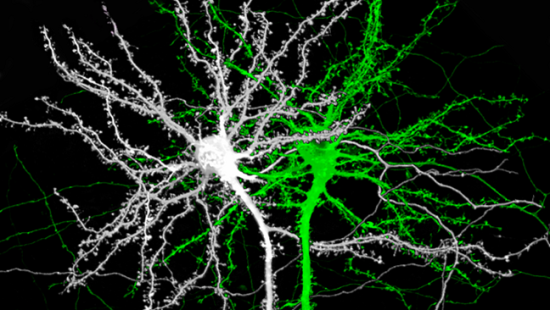
Memory, from your earliest thoughts to today’s grocery list, is a complex process necessary for cognition. The ability to form long term memories requires changes in the synapses – the structures neurons use to transmit information.
To better understand how these changes take place, scientists genetically altered mice to lack a molecule that supports the synapse. They found that neurons in mice without this molecule (pictured in white) compensate by generating larger dendritic spines – the visible bumps on the tree-like branches above – compared with normal mice (pictured in green). This small change improved memory in the mice1.
In another study, researchers at Albert Einstein College of Medicine developed a mouse model in which molecules crucial to making memories (beta-actin mRNA) were given fluorescent “tags” so they could be tracked2.
This clip shows them traveling within a live brain cell in real time.
References:
- Chao HW, et al. Deletion of CPEB3 enhances hippocampus-dependent memory via increasing expressions of PSD95 and NMDA receptors. Journal of Neuroscience. 2013. 33 (43): 17008-22.
- Park et al. Visualization of dynamics of single endogenous mRNA labeled in live mouse. 2014. 343 (6169): 422-424.
